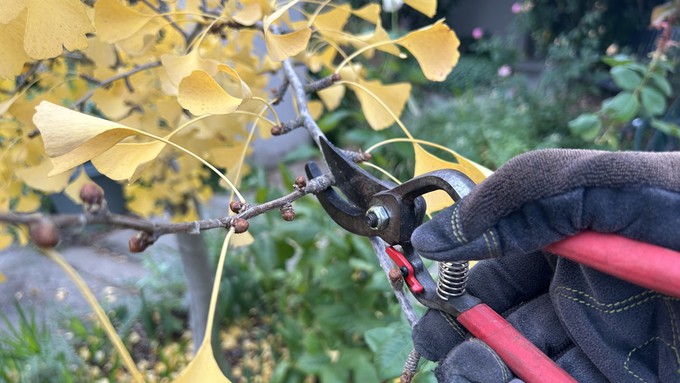
Sacramento Tree Foundation offers hands-on workshop

How young shade trees are pruned can affect their eventual growth and health, the Sacramento Tree Foundation notes. Kathy Morrison
One cut can change the life of a young tree – for good or bad.
Learn how to make the right cuts, including when and where, during a free hands-on workshop offered by the Sacramento Tree Foundation.
Set for 9 a.m Saturday, Nov. 18, “Young Shade Tree Pruning Workshop” starts in a classroom at Florin Creek Recreation Center, located at 7460 Persimmon Ave., Sacramento. After an hour indoors, the workshop moves outside to tackle trees in a nearby park.
“Join SacTree to learn how to prune young shade trees for strong structure and beauty,” say the organizers. “A few simple cuts made now will save a ton of time and money when the trees are mature.”
The foundation provides all the tools. Bring gloves and wear closed-toes shoes and long pants. The class is open to adults and teens, but students must be at least 18 years of age to use tools. This class focuses on deciduous shade trees (not fruit trees).
The class is free but space is limited and attendees should register in advance. An email with class logistics will be sent after registration.
Sign up here: https://sactree.org/event/young-shade-tree-pruning-workshop/.
SacTree has another pruning workshop scheduled on Saturday, Dec. 9, also 9 to 11:30 a.m., but in Rancho Cordova. See details and sign up here.
For more tips on trees and other events: www.sactree.com.
Comments
0 comments have been posted.Sacramento Digs Gardening to your inbox.
Food in My Back Yard Series
April 22: Should you stock up on fertilizer? (Yes!)
April 15: Grow culinary herbs in containers
April 8: When to plant summer vegetables
April 1: Don't be fooled by these garden myths
March 25: Fertilizer tips: How to 'feed' your vegetables for healthy growth
March 18: Time to give vegetable seedlings some more space
March 11: Ways to win the fight against weeds
March 4: Potatoes from the garden
Feb. 25: Plant a fruit tree now -- for later
Feb. 18: How to squeeze more food into less space
Feb. 11: When to plant? Consider staggering your transplants
Feb. 4: Starting in seed starting
Sites We Like
Garden Checklist for week of April 27
Once the clouds clear, get to work. Spring growth is in high gear.
* Set out tomato, pepper and eggplant transplants.
* From seed, plant beans, beets, cantaloupes, carrots, corn, cucumbers, melons, pumpkins, radishes and squash. Plant onion sets.
* In the flower garden, plant seeds for asters, cosmos, celosia, marigolds, salvia, sunflowers and zinnias. Transplant petunias, zinnias, geraniums and other summer bloomers.
* Plant perennials and dahlia tubers for summer bloom. Late April is about the last chance to plant summer bulbs, such as gladiolus and tuberous begonias.
* Transplant lettuce and cabbage seedlings.
* Weed, weed, weed! Don’t let unwanted plants go to seed.
* April is the last chance to plant citrus trees such as dwarf orange, lemon and kumquat. These trees also look good in landscaping and provide fresh fruit in winter.
* Feed citrus trees with a low dose of balanced fertilizer (such as 10-10-10) during bloom to help set fruit. Keep an eye out for ants.
* Apply slow-release fertilizer to the lawn.
* Thoroughly clean debris from the bottom of outdoor ponds or fountains.
* Start thinning fruit that's formed on apple and stone fruit trees -- you'll get larger fruit at harvest (and avoid limb breakage) if some is thinned now. The UC recommendation is to thin fruit when it is about 3/4 of an inch in diameter. Peaches and nectarines should be thinned to about 6 inches apart; smaller fruit such as plums and pluots can be about 4 inches apart. Apricots can be left at 3 inches apart. Apples and pears should be thinned to one fruit per cluster of flowers, 6 to 8 inches apart.
* Azaleas and camellias looking a little yellow? If leaves are turning yellow between the veins, give them a boost with chelated iron.
* Trim dead flowers but not leaves from spring-flowering bulbs such as daffodils and tulips. Those leaves gather energy to create next year's flowers. Also, give the bulbs a fertilizer boost after bloom.
* Pinch chrysanthemums back to 12 inches for fall flowers. Cut old stems to the ground.
* Mulch around plants to conserve moisture and control weeds.